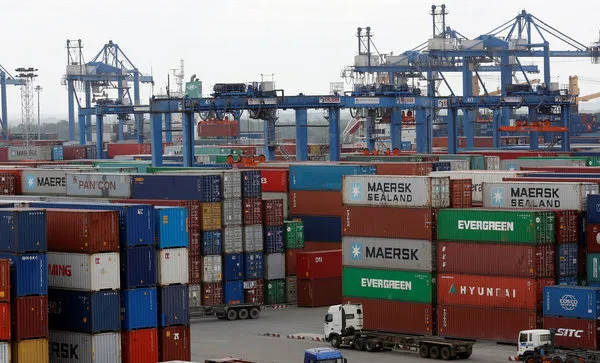The Vietnamese government expects to have a trade deficit curbed at 3% of total export value in 2020, indicating the first trade gap after four consecutive years of having surplus, according to a government report submitted to the National Assembly.
In order to justify such a target, Minister of Industry and Trade Tran Tuan Anh said the country posted trade surpluses over the past few years thanks to fast-growing exports, averaging 14.5% in the 2016 – 2018 period, in which exports grew by a two-digit rate, 21.8% and 13.3% in 2017 – 2018.
However, taking into consideration unfavorable domestic and global economic conditions in 2020, the MoIT expected this would be a challenging year for Vietnam’s exports, said Anh.
Anh pointed to growing uncertainties in the world economy, and the global economic growth has been revised downward in 2020 by various global economic institutions.
Moreover, trade and economic policies of major economies such as the US or the EU could change rapidly and have multiple impacts, not to mention a growing number of fresh trade tensions around the world.
In reality, such impacts have already led to a slowdown in Vietnam’s exports in the first 10 months.
Anh also referred to the growing trend of protectionism as many countries are willing to violate regulations of the World Trade Organization (WTO) to protect domestic production.
Additionally, many Vietnam’s export staples are facing numerous challenges, including the EU’s yellow card imposed on Vietnam’s fisheries, fiercer competition in agricultural and seafood exports, slow development of supporting industries, among others.
Anh noted Vietnam’s rapidly growing exports to the US recently could lead to the latter’s tightening control over its imports.
Meanwhile, Vietnam’s industrial sectors still rely on input materials for production and exports.
Anh expected there could be another wave of investment to Vietnam in 2020 in anticipation of the enactment of the EU – Vietnam Free Trade Agreement, as well as impacts of the US – China trade war, leading to a surge in imports of equipment, machinery and input materials.
In this context, the MoIT expects Vietnam’s import growth in 2020 at 8 – 10%, higher than that of exports at 6 – 7%, resulting in a minor trade deficit.












